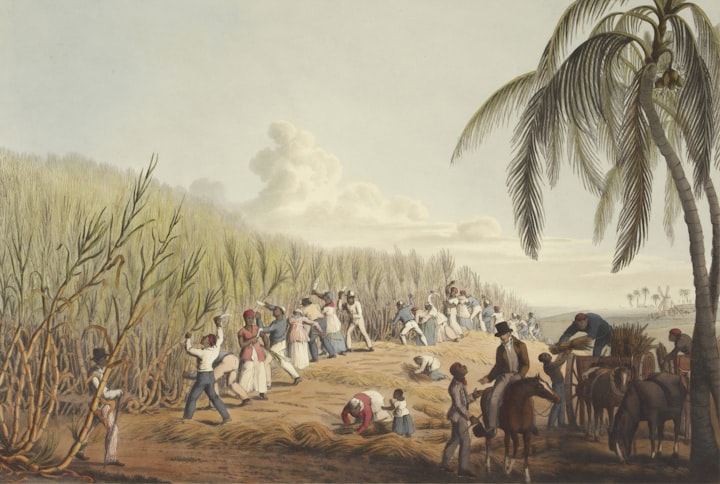The story of Atlantic slave trade
This is a slave trade history between Africa and America

People were traded from Africa to America in a very cheaper rate and worst mode of transport. many people died during the voyage due to food scarcity. From approximately 1526 to 1867, the Atlantic Slave Trade transported approximately 12.5 million slaves from Africa, with 10.7 million arriving in the America. The Atlantic Slave Trade was most likely the most expensive in terms of human life of all long-distance global migrations. The first Africans forced to work in the New World left Europe, not Africa, at the beginning of the sixteenth century. The first direct slave voyage from Africa to the Americas most likely took place in 1526. The number of slaves taken from Africa increased from 30,000 per year in the 1690s to 85,000 per year a century later. Between 1700 and 1850, more than eight out of ten Africans forced into the slave trade crossed the Atlantic.
From 1821 to 1830, over than 80,000 people per year left Africa on slave ships. Within next twenty years, well over a million more were taken, accounting for one-tenth of the volume taken during the slave trade era. By 1820, nearly four Africans for every European had crossed the Atlantic, and nearly four out of every five women who crossed were from Africa. Between 1720 and 1780, the majority of enslaved Africans brought to British North America arrived.
The majority of the Africans transported to Brazil were from Angola. The majority of Africans brought to North America, including the Caribbean, came from West Africa. Over 90% of enslaved Africans were transported to the Caribbean and South America. Only about 6% of African captives were shipped to British North America directly. Nonetheless, by 1825, the US population included roughly one-quarter of the New World's people of African descent.

For African slaves, the Middle Passage was perilous and terrifying. Men, women, and children were kept naked and packed close together, and men were chained for long periods of time. Approximately 12% of those who boarded did not survive the voyage. The slave death rate in the Caribbean, Dutch Guiana, and Brazil was so high, and the birth rate so low, that they could not sustain their populations without African imports. Natural decline rates reached up to 5% per year. While the death rate of US slaves was similar to that of Jamaican slaves, the fertility rate in the US was more than 80 percent higher. The majority of slaves in the British Caribbean and Brazil in the nineteenth century were born in Africa. In contrast, by 1850, the majority of slaves in the United States were third, fourth, or fifth generation Americans.
Slavery in the United States was distinguished by the near equality of the sexes and the slave population's ability to increase its numbers through natural reproduction. Unlike any other slave society, the United States experienced a high and sustained natural increase in slave population for over a century and a half. In the south, infant and child mortality rates were twice as high for slave children as for white children. In the first year of life, half of all slave infants die. Chronic malnutrition was a major contributor to the high infant and child mortality rates.
Slave infants' average birth weight was less than 5.5 pounds, which is considered severely underweight by modern standards. The majority of infants born to enslaved mothers were weaned within three or four months of birth. Even in the eighteenth century, doctors recommended weaning at eight months. Slave infants were fed a starch-based diet after weaning, consisting of foods such as gruel, which lacked adequate nutrients for health and growth.

The domestic slave trade in the United States dispersed the African American population throughout the South in a migration that far outnumbered the Atlantic Slave Trade to North America in terms of volume. Despite the fact that Congress outlawed the African slave trade in 1808, the domestic slave trade thrived, and the slave population in the United States nearly tripled over the next 50 years.
Domestic trade continued into the 1860s, displacing approximately 1.2 million men, women, and children, the vast majority of whom were born in America. One of the most dreaded prospects for the enslaved population was being "sold down the river." Some destinations, particularly the Louisiana sugar plantations, had a particularly bad reputation. However, it was the destruction of families that resulted in the domestics becoming slaves.





Comments
There are no comments for this story
Be the first to respond and start the conversation.